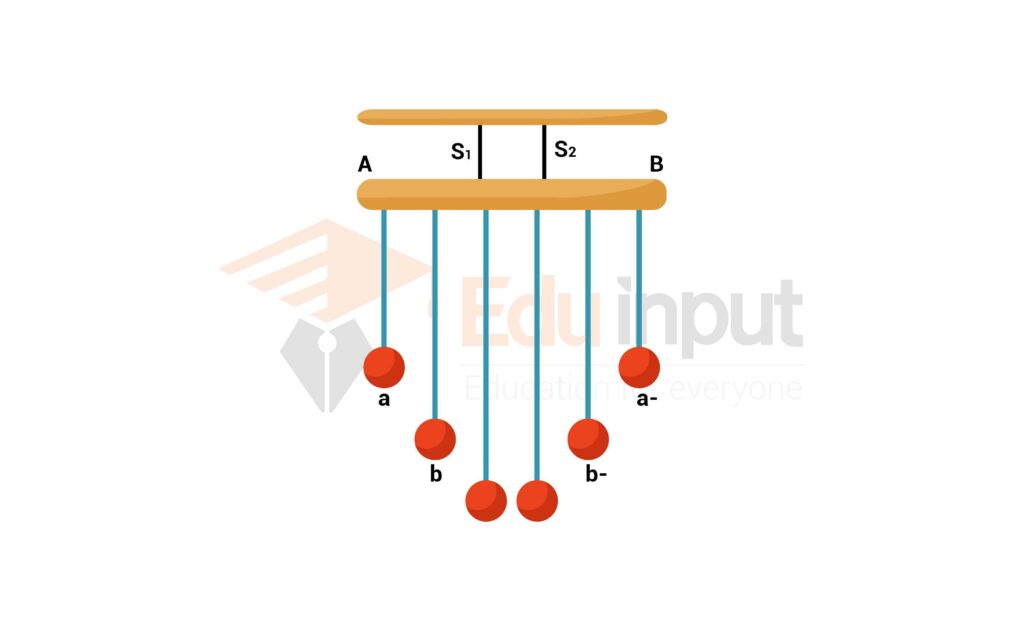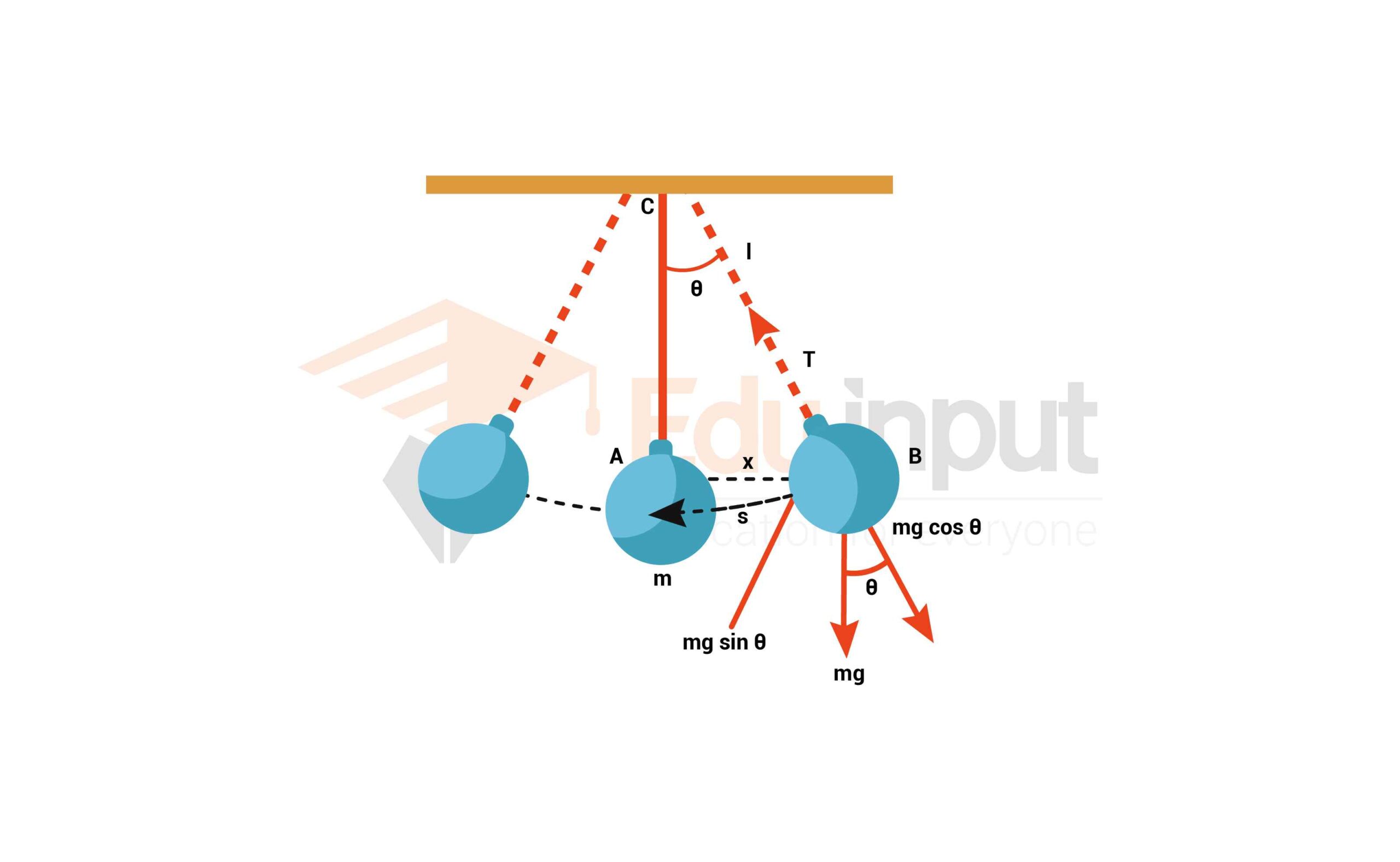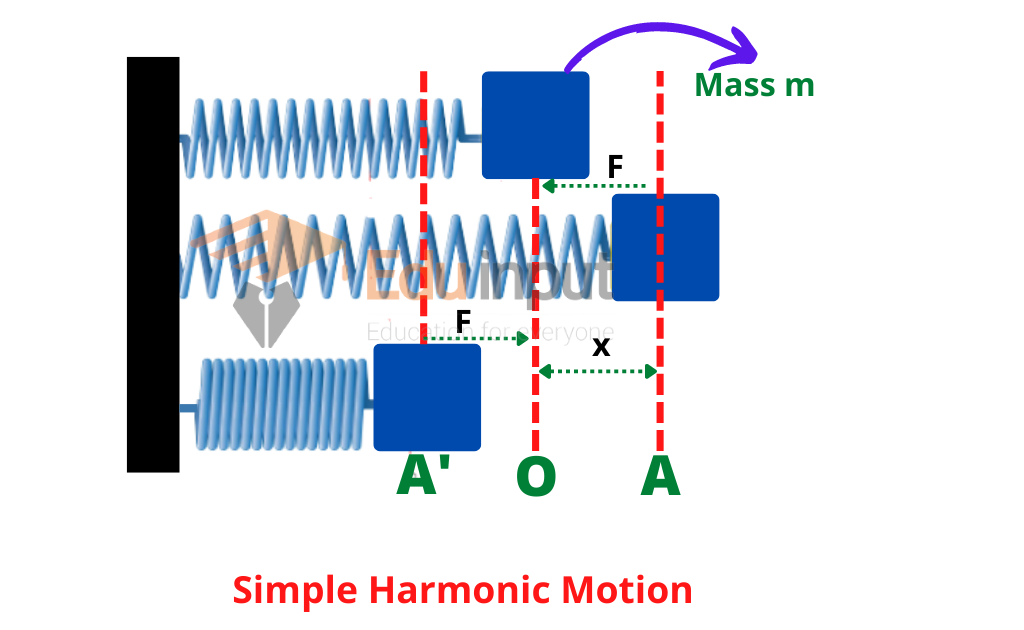Resonance | Electrical, Mechanical, And Magnetic Resonance
Resonance arises if the external driving force is periodic with a comparison to the natural period of the oscillator.
Resonance
It occurs when the frequency of the applied force is equal to one of the natural frequencies of vibration of the forced or driven harmonic oscillator.
When a force acts on a body having a frequency (and time period) equal to the natural frequency (and time period) of the body, then the body vibrates with increasing amplitude. This phenomenon is known as Resonance
The situation in Resonance
In a resonance situation, the driving force may be weak but the amplitude of the motion may become extraordinarily large. In the case of an oscillating simple pendulum, if we blow to push the pendulum whenever it comes in front of our mouth, it is found that the amplitude steadily increases.
Barton’s Pendulum Experiment

Imagine a horizontal bar AB supported by two strings S1 and S2. On this rod hang these three pairs of pendulums: aa’, bb’, and cc’. Each pair has the same length but varies from pair to pair.
When one of these pendulums, say c, is displaced perpendicular to the plane of the paper. As a result, the oscillatory motion of rod AB causes a very slight perturbative motion, whose period is the same as that of c. A slight movement of this bar causes each of the remaining pendulums (aa’, bb’, and cc’) to experience a slight periodic motion.
This causes the pendulum e to oscillate back and forth with steadily increasing amplitude because its length and period are exactly the same as that of c.
However, the amplitudes of the other pendulums remain small throughout the following motions of c and c because their natural periods are not the same as that of the disturbing force due to rod AB. There are many examples of resonance in everyday life.
Mechanical Resonance
Swing is a good example of mechanical resonance. It is a simple pendulum with a single natural frequency depending on its length.
If a series of regular pushes are given to the swing, its motion can be built up very much. If the pushes are given irregularly, the swing will hardly vibrate.
The collapse of the suspended bridge
If there is a big span of a bridge, then the columns of soldiers are advised to break their steps. Their rhythmic march might set up oscillations of dangerously large amplitude in the bridge structure. Due to resonance, the amplitude grows so high that it may collapse.
Electrical Resonance
There are many examples of electrical resonance.
Tuning a radio
Tuning a radio is the best example of electrical resonance.
When we turn the knob of the radio to tune a station, we are changing the natural frequency of the electric circuit of the receiver, to make it equal to the transmission frequency of the radio station. When the two frequencies match, it is tuned to a particular radio.
Cooking of food by microwave oven
Another good example of resonance is the heating and cooking of food by a microwave oven.
The waves produced in this type of oven have a wavelength of 12 cm at a frequency of 2450 MHz.
At this frequency, the waves are absorbed due to resonance by water and fat molecules in the food, heating them up and so cooking the food.
Magnetic Resonance
Magnetic resonance imaging (MRI) has greatly improved medical diagnoses. Strong radio frequency radiations are used to cause nuclei of atoms to oscillate. When resonance occurs, energy is absorbed by molecules.
The pattern of energy absorption can be used to produce a computer-enhanced photograph.







Leave a Reply